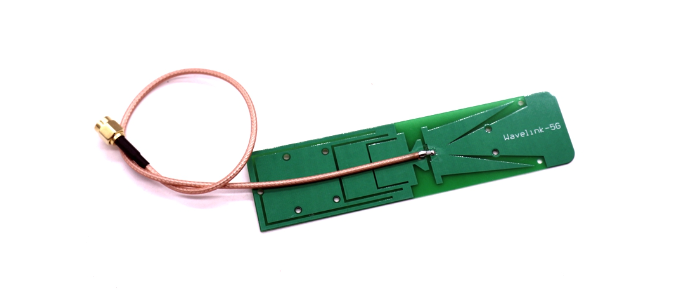PCB antennas are crucial in todayâs compact wireless devices. These antennas are directly integrated into the PCB board, providing an efficient way to transmit and receive signals. They have become more and more important in IoT devices, smartphones, and many other electronic products.
What is a PCB Antenna?
A PCB antenna is an antenna built directly onto the printed circuit board, often as a conductive trace or embedded component. By integrating it directly onto the PCB, the antenna becomes a seamless part of the overall design, eliminating the need for separate antennas. The design principle of PCB antenna is based on electromagnetic field theory. By arranging a specific metal conductor pattern on the PCB board, an effective electromagnetic radiation and receiving structure can be formed, so as to achieve the transmission and reception of wireless signals.

This antenna uses PCB as the medium, through the PCB process to achieve, no need to assemble the antenna separately, testing and use are very convenient. PCB antenna can be directly integrated on the circuit board, easy to touch and damage, and easy to assemble.
PCB Antenna Types
PCB antennas come in different types, each suited to specific applications and requirements. The most common types include:
- Monopole Antennas
These antennas are simple, consisting of a single conductor. Theyâre straightforward to design and offer decent performance for applications with limited space. Monopole antennas are ideal for Bluetooth and Wi-Fi applications, where simplicity is needed without compromising basic functionality.
- Dipole Antennas
Known for their balanced design, dipole antennas use two conductors, often resulting in improved radiation patterns. They are commonly used in environments where the antenna needs to work effectively in multiple directions. Dipole antennas are popular in high-frequency applications.
- Inverted-F Antennas (IFA)
This type features a ground plane and a radiating element shaped like an âF.â IFAs are compact and provide a stable, omnidirectional pattern, making them suitable for Wi-Fi and cellular applications. The structure of IFA antennas helps achieve good efficiency even in confined spaces.
- Patch Antennas
These antennas are flat and rectangular, making them excellent for devices with strict space limitations. Often used in GPS and RFID applications, patch antennas offer directional radiation patterns, allowing them to focus energy toward specific areas, enhancing range and strength.
- Slot Antennas
Slot antennas consist of a slot cut out of a conductive surface, with electromagnetic fields radiating from the slot. They are typically more directional, so they are suitable for specific point-to-point applications or where the signal needs to be targeted.
What is the Frequency Range of a PCB Antenna?
The frequency range of a PCB antenna depends on the design and intended application. Most PCB antennas operate within common wireless communication bands, such as 2.4 GHz for Wi-Fi, Bluetooth, and other short-range communications. However, they can be designed for various ranges, including sub-1 GHz bands (for long-range IoT applications) and frequencies as high as 5 GHz for Wi-Fi 6 and other high-speed networks.
Higher frequencies typically require smaller antennas, which aligns well with compact devices but may also affect range. Low-frequency antennas, on the other hand, are larger but provide greater coverage and are less affected by obstacles.
PCB antenna’s Basic Formulas
1. Wavelength Calculation
The wavelength (λ) of the signal is an essential parameter in designing antennas, especially for determining the length of a PCB trace antenna.

Where:
c = Speed of light (approximately 3Ã10^8m/s)
f = Frequency in Hz
For example, at 2.4 GHz (a common frequency for Wi-Fi and Bluetooth), the wavelength is around 12.5 cm.
2. Length of a Monopole Antenna
For a monopole antenna on a PCB, the length (L) of the antenna is typically set to one-quarter of the wavelength. This is known as a quarter-wave monopole antenna, which is commonly used in PCB designs.

This length provides a good balance of efficiency and compact size.
3. Length of a Dipole Antenna
A dipole antenna is usually designed to have a length of half the wavelength. The total length L for a dipole is:

Each “arm” of the dipole would then be a quarter-wavelength. This structure is well-suited for many applications due to its balanced design.
4. Inverted-F Antenna (IFA) Length Calculation
For an Inverted-F Antenna, the length of the main resonant arm is usually close to a quarter of the wavelength. This helps the IFA to maintain a compact form while still achieving effective performance:

Since IFAs often include a grounding element, they may be slightly shorter than traditional quarter-wave monopoles.
5. Impedance Matching
The impedance (Z) of the antenna needs to match the transmission line (typically 50 ohms) to maximize power transfer. For a basic dipole or monopole antenna, the impedance can be approximated with empirical formulas. For instance, a free-space dipole impedance is around 73 ohms, but this value changes on a PCB.
To achieve matching, adjustments can be made by changing the length or width of the antenna trace or by using matching networks with inductors or capacitors.
6. Resonant Frequency Calculation
The resonant frequency (f) of a PCB trace antenna depends on its physical length. Rearranging the wavelength formula allows you to solve for f if you know the length:

Where L would typically be one-quarter of the wavelength for a monopole or half for a dipole.
7. Effective Dielectric Constant Adjustments
PCB antennas are affected by the PCB materialâs dielectric constant (ϵr). This changes the effective wavelength (λ):

Using this adjusted wavelength improves accuracy in trace length calculations for PCB antennas, especially when working with substrates with a high dielectric constant.
8. Bandwidth Calculation
The bandwidth of a PCB antenna can be approximated using the Quality Factor (Q) of the antenna:

Where Q is influenced by factors such as antenna length, material, and layout. Lower Q values usually provide broader bandwidth, which can be achieved through specific design choices like wider traces or shorter antennas.
9. Gain Estimation
The gain of a PCB antenna depends on its radiation pattern and efficiency. Although gain is typically measured rather than calculated, some estimates can be made based on the type of antenna and its efficiency. For simple PCB antennas, a rough gain value might range from 0 dBi (isotropic) for omnidirectional designs to 3â5 dBi for directional designs.
Are PCB Antennas Directional?
PCB antennas can be directional or omnidirectional, depending on their type and design. Directional antennas focus the energy in a specific direction, which increases range in that direction while reducing it in others. Omnidirectional antennas, in contrast, distribute the signal evenly in all directions, which is beneficial for applications where the device orientation may vary.
Patch antennas and slot antennas are generally more directional, suitable for point-to-point communication or when a targeted signal path is needed. Monopole and dipole antennas, however, are typically omnidirectional, making them ideal for devices like smartphones and IoT gadgets, where a consistent signal is required from various angles.
The choice between directional and omnidirectional antennas should align with the specific needs of the application. For example, in a warehouse, an omnidirectional antenna might be preferred for broad coverage, while a directional antenna could be beneficial for a remote control application.
What Are the Applications of PCB Antenna?
PCB antennas are used in a wide range of applications, including:
- Consumer Electronics: PCB antennas are essential in smartphones, tablets, and laptops for Wi-Fi, Bluetooth, and cellular connectivity.
- IoT Devices: Many IoT devices use PCB antennas for wireless data transmission, making them integral in smart homes, agriculture, and industrial monitoring.
- Automotive: In vehicles, PCB antennas enable GPS, remote keyless entry, and other connectivity features, enhancing both functionality and user experience.
- Medical Devices: PCB antennas are used in medical equipment for wireless communication, which enables real-time monitoring and diagnostics.
- Wearables: PCB antennas are commonly found in wearable tech like fitness trackers and smartwatches, where compactness is a priority.
- Industrial Equipment: Many industrial machines rely on PCB antennas for remote monitoring and control, helping to streamline operations and improve efficiency.
When choosing a PCB antenna, consider the application requirements, including size constraints, frequency range, and directional needs. PCB antennas bring numerous advantages to electronics, from consumer gadgets to industrial equipment. With the right antenna, you can achieve reliable wireless communication, keeping your designs efficient and effective in todayâs connected world.


